In his latest column, John Cross ’76 looks toward spring break, which means more than fun in the sun for many Bowdoin students and often provides the first steps on a journey of public service.
In a school year in which two of the heaviest snowfalls in Brunswick occurred before Thanksgiving, the upcoming spring break doesn’t carry the same sense of urgency to escape the iron hand of winter as in previous years. Spring vacation begins after the last classes on Friday, March 9, and ends at 8 AM on Monday, March 26. For some students it will be a chance to travel with friends; for others it means devoting time to an honors project or independent study, taking a short-term job, or helping out at home.
The baseball, softball, and lacrosse teams have a busy schedule in central Florida over the break, while the tennis and track and field teams will be competing in California. Still other students (on the order of 100 or so) will engage in alternative spring break projects organized through the Joseph McKeen Center for the Common Good on campus. Projects are proposed, led, and carried out by Bowdoin students, and bring into a very personal and immediate focus issues of health, nutrition, housing, and education that are linked to poverty or refugee status. This year one might encounter a volunteer wearing a Bowdoin t-shirt or baseball cap renovating houses in West Virginia or New Orleans; teaching children whose families live in the Guatemala City dump; assisting refugees in Atlanta or Phoenix or the homeless in Washington, DC; working in inner-city schools in Camden, New Jersey; or addressing issues of health education in a Native American community in New Mexico.
Alternative Spring Break has been a formal program at Bowdoin since 2002, although its roots extend back a half-century or more to student activism in the 1960s. The Bowdoin Undergraduate Civil Rights Organization (BUCRO) was formed in the early years of that decade, and sought to engage students in the national struggle for voting rights, equal protection under the law, and the removal of racial barriers to educational opportunity. BUCRO advocated expanding diversity within the Bowdoin student body and the faculty, and it sponsored speakers, concerts, and exhibitions of art to promote understanding and awareness on campus. In the 1963-64 year there were three African-Americans enrolled at Bowdoin out of a student body of 820. BUCRO responded to this situation with action. What had begun as a spring break exchange program in 1963 between Bowdoin and Morehouse College (a historically black all-male college in Atlanta) became a full-semester exchange program in the spring of 1964. Project 65 was a spring-break initiative that sent teams of Bowdoin undergraduates to encourage applications from students at inner-city high schools in Chicago, St. Louis, Louisville, Pittsburgh, Cincinnati, Cleveland, Indianapolis, and in Virginia and the Carolinas. It was followed by Project 66 and in 1967 by a similar program, Workshops in Higher Education. The immediate response was a slight uptick in applications to the College from African-American students. As the late Bob Mellow (associate director of admissions at the time) pointed out, Project 65 and its successors were not a panacea that instantly created educational opportunity for all, nor did they guarantee greater diversity at Bowdoin. However, they constituted a first step that forced a re-examination of secondary school education and college admissions policies in light of public school integration and the social and economic changes set in motion by the civil rights movement.
- Bowdoin and Morehouse College students outside the Chapel, Spring Break 1963.
- Dana Harknett ’70 (left) and N. Charles Farwell ’69 (right) provide theatrical advice as part of Project Bermuda North.
- The Joseph McKeen Center for the Common Good has been promoting Alternative Spring Break Projects since 2002.
- A 2008 photo by Karsten Moran ’05 captures the moment, as Katy Buckland ’08 reads to a rapt audience at Promise Academy Charter School in the Harlem Children’s Zone.
Within the prevailing climate of activism in the 1960s, the College established the Upward Bound Program to encourage students from low-income households in Maine to become first-generation college graduates. Bowdoin students established volunteer programs to work with at-risk local youth (Big Brothers), as teachers’ assistants in local schools (Bowdoin Undergraduate Teachers), and as aides at the nearby Pineland Hospital and Training Center. Over the 1969 spring break, students worked with the Newman Apostolate in Project Bermuda North to bring arts enrichment programs to the children of the Passamaquoddy tribal community at Peter Dana Point in eastern Maine. In a renewal of ties to Maine’s First Peoples, Bowdoin students, as they have for the past four spring breaks, will travel to middle schools associated with the Penobscot, Passamaquoddy, Micmac, and Maliseet tribes as part of the Wabanaki- Bates-Bowdoin-Colby (WBBC) Collaborative, a program sponsored by the President’s Office. Working with one or more faculty members, the students present engaging content on topics such as behavior and the brain, monitoring environmental quality, archaeology, or film-making. The opportunity for these young students to meet undergraduates (including members of Bowdoin’s Native American Students Association) turns higher education from a remote prospect into something that is not only achievable, but well worth considering.
President Kenneth Sills [1901] used to say that it was more important for the College’s alumni to be on tap than it was for them to be on top. For several years Bowdoin has been ranked among the top 25 small colleges in the number of alumni who have served in the Peace Corps and in the Teach for America program. The first steps on a journey of public service may have been taken during a spring break in response to confronting the unmet needs of others, be they strangers or members of our own families or communities. Tucked in between class schedules for the spring semester are a few precious days of self-discovery and evaluation in which the practical applications of abstract concepts and opportunities for personal action come into sharp relief. I hope that you will treasure your own “spring breaks” as much as I do, whenever they occur on the calendar.
With Best Wishes,

John R. Cross ’76
Secretary of Development and College Relations

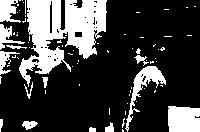
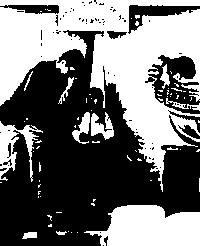
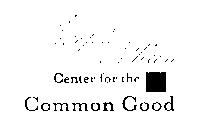
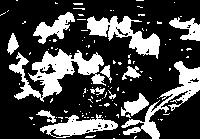
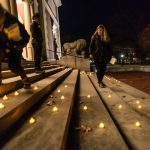
John
Always richly rewarding to read the Pines. Your dedication and PB touch brings back many fond memories.
Keep it up.
Mike